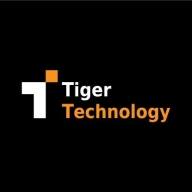Simplifies our backups with an agentless backup manager, but needs better integration with in-house applicationsOne area that can be improved is around how we define the different KPIs. In particular, the business KPIs. I have my own in-house application for the business KPIs, so for example, with our policies around retention, which is a period of seven years, I have to read these parameters from other applications and I need them to integrate well. NetApp Cloud Backup Manager should help to get this integrated seamlessly with other applications, meaning that it will populate the data around the different parameters. These parameters could be things like the retention period, the backup schedule, or anything. It might be an ITSM ticket, where it's a workflow that is triggered somewhere, and the ITSM ticket has been created for a particular environment like my development environment, an INT environment, or a UAT environment. This kind of process needs to integrate well with my own application, and there are some challenges. For example, if it allows for consuming of RESTful APIs, that's how we will usually integrate, but there are certain challenges when it comes to integrating with our own application around KPIs, whether it's business KPIs or technical KPIs. What I want is to populate that data from my own applications. So we have have the headroom in the KPI, and we have the throughput, the volumes, the transactions per second, etc., which are all defined. And these are the global parameters. They affect all the lines of business. It's a central application that is consumed by most of the lines of business and it's all around the KPIs. Earlier, it used to be based on Quest Foglight, which is an application that was taken up and customized. It was made in-house as a core service, and used as a core building block. But our use of Quest Foglight has become a bit outdated. There is no more support available, and it's been there as a kind of legacy application for more than ten years now in the organization. And now it get down to the question: Is this an investment or will we need to divest ourselves of it? So there has to be an option to remediate it out. In that case, one possibility is to integrate the existing application and it gets completely decommissioned. Here it would help if there were some better ways of defining or handling the KPIs in the Cloud Manager, so that most of the parameters are not defined directly by me. Those will be the global parameters that are defined across all the lines of business. There are some integration challenges when it comes to this, and I've spoken to the support team who say they have the REST APIs, but the integration still isn't going as smooth as it could be. Most of the time, when things aren't working out, we need dedicated engineers to be put in for the entire integration. And then it becomes more of a challenge on top of everything. So if the Cloud Manager isn't being fed all the kinds of parameters from the backup strategy around the ITSM and incident tickets, or backup schedules, or anything related to the backup policies, then it takes a while. Ideally, I would want it to be read directly from our in-house applications. And this is more to do with our kind of product processes; that is, it's not our own choice to decide. The risk management team has mandated this as part of the compliance, that we have to strictly enforce the KPIs, the headroom, and the rest of the global parameters which are defined for the different lines of business. So if my retention period changes from seven years to, let's say, 10 years or 15 years, then those rules have to be strictly enforced. Ultimately, we would like better support for ITSM. The ITSM tools like ServiceNow or BMC Remedy are already adding multiple new features, so they have to be upgraded over a period of time, and that means NetApp has to provision for that and factor it in. Some of the AI-based capabilities are there now, and those things have to be incorporated somehow. One last thing is that NetApp could provide better flash storage. Since they're already on block storage and are doing well in that segment, it makes sense that they will have to step up when it comes to flash array storage and so on. I have been evaluating NetApp's flash array storage solutions versus some others like Toshiba's flash array and Fujitsu's storage array, which are quite cost-effective.


